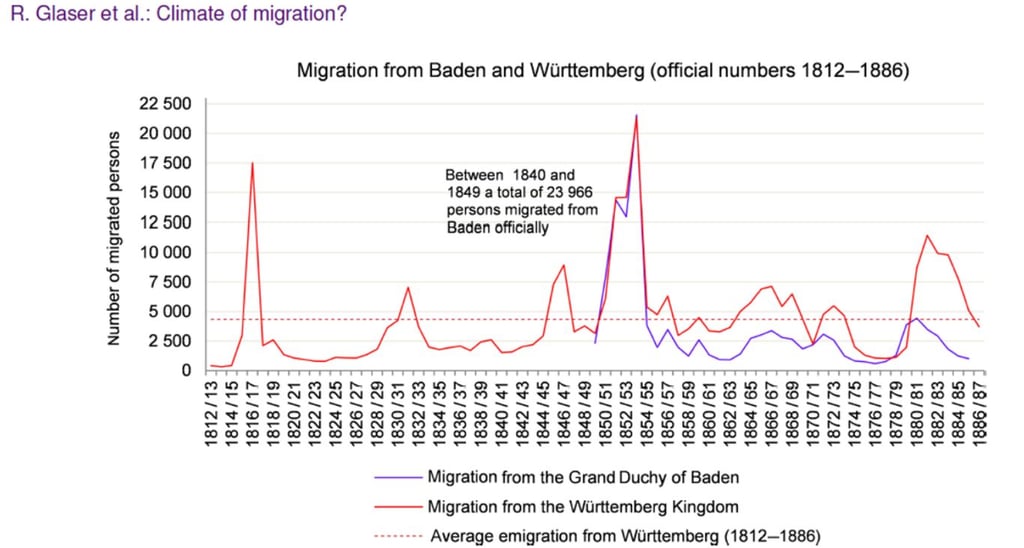[ARCHIVE] Trump and the 19th Century climate migrants
CLIMATE MIGRATION
There are myriad stressors that affect the migration of people in societies. One of these is a changing climate. Before we turn, in the coming weeks, to predicting how climate variability will cause future migration, let’s look back to a specific case from the past.
But first, a quick check-in on the current POTUS’s current view of the current climate.
As hard as it is to pin down Donald Trump to one opinion on climate change, with his vacillation sometimes causing him to be a conspiracy theorist (remember his famous tweet of 2012 calling climate change a Chinese hoax?) and other, more sober times, he is merely a denier of the change’s anthropogenic nature. It is clear that he has little will to understand or consider scientific consensus.


However, looking back to 1885, Donald Trump’s great grandfather Friedrich Trump (or Friedrich Drumpf?) left Southwest Germany, hitherto the home of the Trump family, for the New World (see image below). Nineteenth century Germany has a tumultuous history; war, poverty and revolutions all played significant roles in the movement of 5 million people in Southwest Germany to North America – as did climate.
The Little Ice Age was coming to an end. With its coldest periods seeing major glacial advances and many extreme weather events spanning the 1400s to 1850s. A study in the Climate of the Past Journal, reviews the evidence that climate was a significant driver of migration from Southwest Germany to North America in the 19th Century. This video from the European Geosciences Union gives a short summary:
Migration route of 19th century Germans to the United States of America
As can be best seen in the figure from the paper (left), there were clearly three major migration waves during the course of the century.

The prominent peak in the number of emigrants from 1816-17 was caused by the eruption of Mount Tambora in Indonesia in 1815. The ash and sulphur ejected into the atmosphere caused an aerosol-shield from sunlight all over the globe. 1816 is often dubbed ‘The year without a Summer’. The cold temperatures led to widespread crop-failures led to famine led to emigration.
The peak of the 1880s, the emigrant cohort in which we might lump Trump, doesn’t have as extreme an event. Despite two large floods in the Southwest region in the November and December of 1882, it is likely that the climate was a tepid stressor for these emigrants. More likely, says the paper, is that the ‘pull’ from the New World was the principle driver.
Overall, the paper concludes that 20-30% of the migration over the course of the century was caused indirectly by climate. Of course, it is impossible to say whether Friedrich Trump left Germany due to the degradation of the climate or in order to pursue the freedom and opportunity that the United States represented. Perhaps your opinion on the matter might reflect your judgement of the President or your political beliefs more than anything else.
And yet, all of Donald Trump’s power, success and scientific illiteracy stemmed from one decision made by his grandfather - or was it in fact the climate?
[This blog was first published as a part of my UCL Masters Degree in 2018.]
Help me out, by subscribing to my blog updates!


The paper considered all the factors that might ‘push’ or ‘pull’ potential emigrants ‘away from’ or ‘towards’ the New World. A harshening climate can directly ‘push’ people away from a region, or indirectly through degrading crop yields and causing a subsequent spike in food prices.